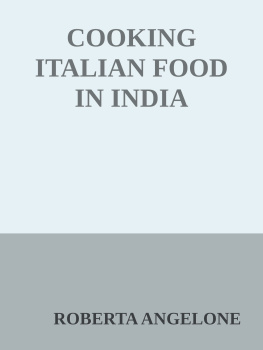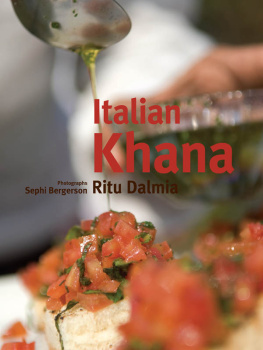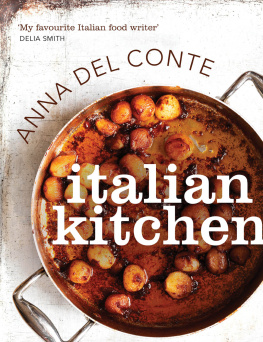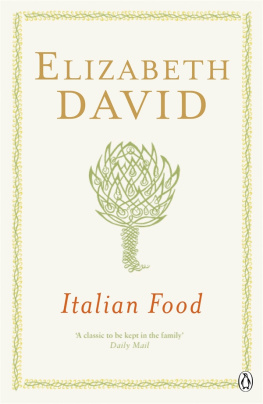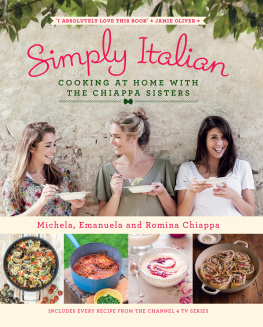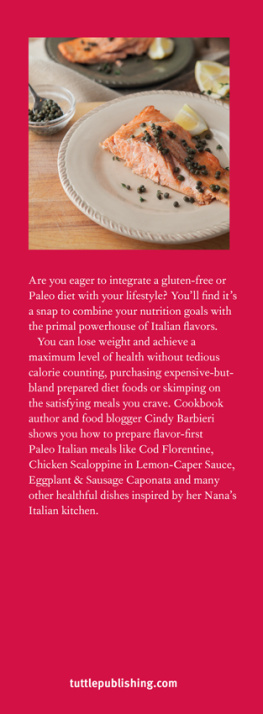Cooking Italian food in India
Roberta Angelone started her culinary career in Italy where she worked in various restaurants. She moved to India seventeen years ago and worked as consultant chef for a popular Italian restaurant in Manali, Il Forno, till Oct 2011. She currently works as the Italian chef at Johnson Lodge in Manali.
westland ltd
61 Silverline Building, 2nd floor, Alapakkam Main Road, Maduravoyal, Chennai 600095 No. 38/10 (New No. 5), Raghava Nagar, New Timber Yard Layout, Bangalore 560026 93, 1st Floor, Sham Lal Road, New Delhi 110002
First published by westland ltd 2013
First e-book edition: 2013
Copyright Roberta Angelone 2013
All rights reserved
ISBN: 978-93-83260-39-3
Design: seema sethi { design }
Photographs: Svetlana Bashlykova
This book is sold subject to the condition that it shall not by way of trade or otherwise, be lent, resold, hired out, circulated, and no reproduction in any form, in whole or in part (except for brief quotations in critical articles or reviews) may be made without written permission of the publishers.
Contents
Introduction
I have travelled all my life, and one of the many pleasures that I have had on my journeys, is eating. I love to eat. I can eat almost anything, especially if it is a part of the local cuisine. In fact, it is this passion for eating and cooking that has enriched my travelogues in so many different ways. Over the years, I have learnt about the different forms of food on earth, and the different ways that it can be cooked. But, at the same time, Ive realized one thing more. No matter where I am, there have always been these moments when I have dreamt of nothing but pastas, pizzas and the like. In short, Italian food
So what do I do? I search for an Italian restaurant and eat. Sadly though, rarely have I been happy with those craving meals. Most times, the so-called Italian dishes proved to be nothing more than a shadow of the original. The pasta would usually be overcooked, immersed in ketchup; and the pizza, unrecognizable. A mirage, in other words.
A few more such incidents and I was following what, unknown to me then, Italians across the world do cook my own Italian food. I realized that we Italians cook wherever we go, and I was just simply following a common, age-old tradition. But the beginning was rife with challenges.
Usually the biggest challenge in cooking Italian food elsewhere is to reproduce the same flavours with locally available ingredients. Fortunately, for me, basic ingredients like flour, tomatoes and eggs are easily available, and mostly taste the same, everywhere. Th ank god for that. But sourcing the essential herbs was an issue back in the day. Invariably, I ended up towing my own spice box, complete with herbs like oregano, olive oil and other characteristic ingredients of Italian cooking with me. It was akin to carrying my own roots with me, and I loved it!

Of course, there were times when I had to tweak and change a few things to make that dish worth the while. Other times, the dish would simply blossom beyond belief. Over the years, these experiences have enabled me to put together my own little book of ideas and recipes that stood the lapse of time zones. This book isnt just a compilation of recipes, but an introduction to cooking authentic Italian dishes with local ingredients, no matter where you stay, or travel.
Since then, things have changed a lot. Today, its easy to import and export all kind of products, from anywhere to anywhere in the world. And, thanks to the mushrooming of Italian restaurants in India, Italian food is well known and popular. But are they really authentic? Not all of them, in my opinion. Many are purely commercialized adaptations of the original recipes, unless they have been prepared by a true-bred Italian chef or someone well trained. This clearly means there is a rare chance of finding authentic Italian fare at average restaurants. However, one may find the real thing in five star hotels, but at a price that can literally burn a hole in the pocket. So what is the alternative so you can actually have authentic Italian food? Cook with this book.
Cooking at home is something people it Italy love to do. In fact, cooking for us equals love because it is something we do for people we like, and to make them happy. Cooking is our way of celebrating special occasions like a birthday, a get-together and life. After all, what could be better than having your loved ones over to enjoy good food, good company and laughter, within the comforts of a home?
Having said that, its true that Italian cooking may take a little practice before you can invite friends to enjoy an authentic Italian lunch or dinner, but while getting there you can always have the joy of conjuring up something new to surprise your beloved.
So dont wait. Pick this book, raise your favourite grapa, read and get cooking.
Italian Food Lore
T here is more to Italian food than just pasta and pizza. Italy was where the first indigenous fast food restaurant was born it was in Naples and was called Vaco e Presse (meaning, I am in hurry). It was a rosticceria, a shop that sold roast meat and other pre-cured food. It is said that Vaco e Presse singlehandedly put American fast food giant McDonalds out of business in the country. And the reason for this was the food. For the same amount, or even less, Vaco e Presse offered a richer gastronomic experience than the US fast food giant. The food was good, in quality and in taste.
The world-famous Slow Food movement also started in Italy in 1986. Created by culinary expert and famous editor Carlo Petrini, the purpose behind Slow Food International was, and is, to promote awareness of good food and nutrition by preserving traditional and regional cuisine. The movement encouraged farming of plants, seeds and livestock. It believed that everyone has a right to the pleasures of good food, and the responsibility to protect the heritage of food tradition and culture that made such pleasure possible.
In my view, the concept was and still is, good, clean and fair.











